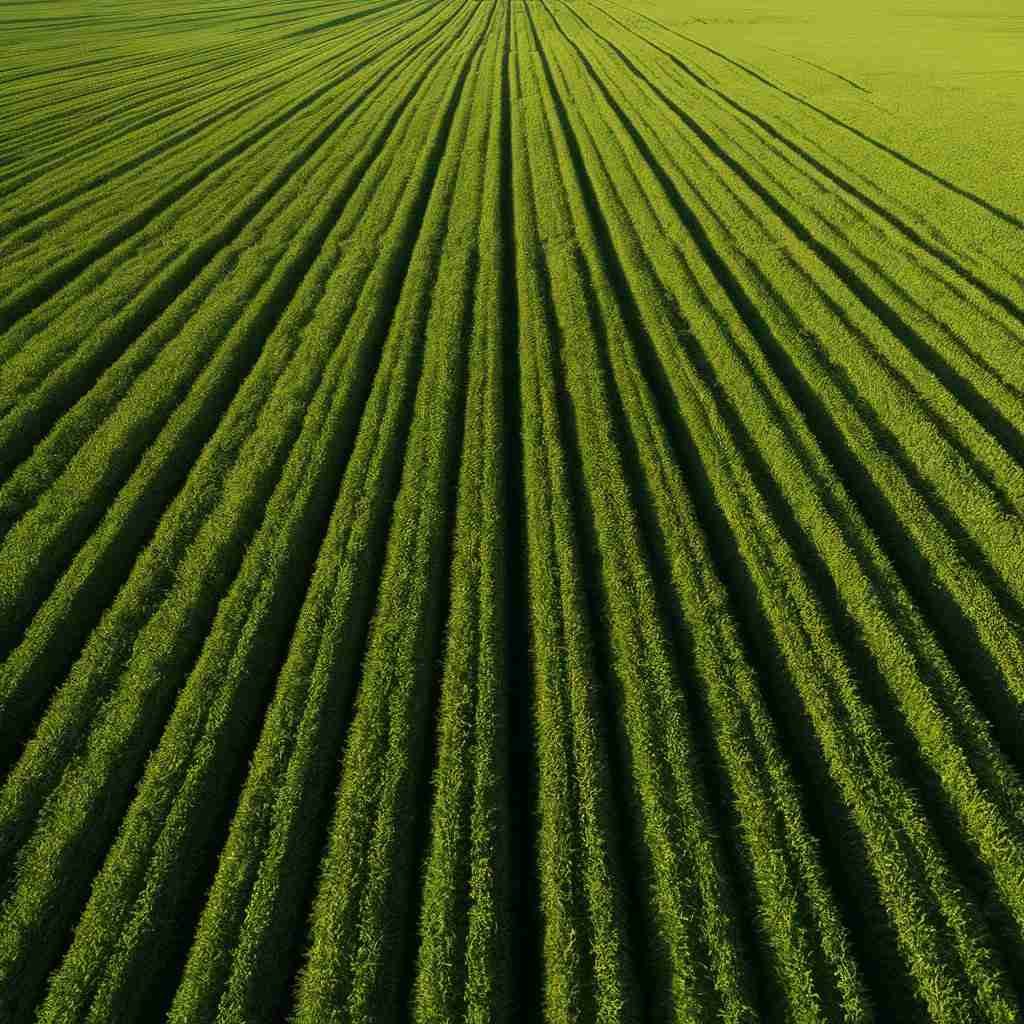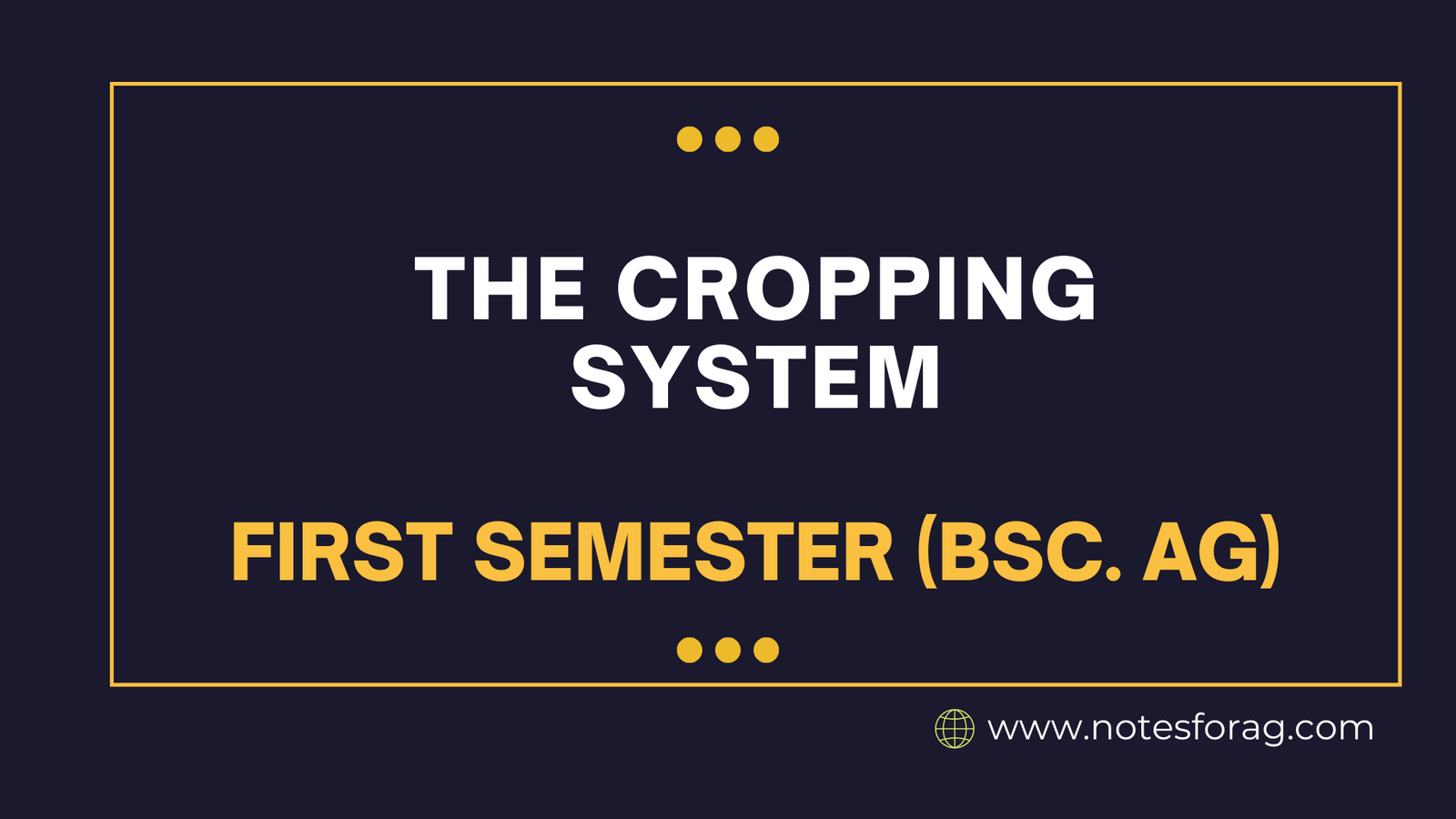A cropping system is a planned method of growing crops on a plot of land that includes the sequences, patterns, and management techniques employed. By taking into account elements including climate, soil, availability of water, and market demand, it seeks to enhance agricultural output and sustainability. Numerous cropping systems, such as conservation agriculture, agroforestry, crop rotation, monocropping, and multiple cropping, present a range of advantages and difficulties.
Table of Contents
Definition
A cropping system is the arrangement and timing of crops planted on a certain plot of land for a predetermined amount of time. It includes all of the agricultural management techniques used to grow these crops, such as planting, fertilizing, irrigating, controlling pests, and harvesting. Numerous elements, including as market demand, soil type, water availability, climate, and socioeconomic considerations, influence the choice of cropping system. The goal of efficient cropping systems is to increase agricultural land’s sustainability and productivity.
Types of Cropping Systems
1. Monocropping (Monoculture)

The practice of growing the same crop on the same plot of land year after year is known as monocropping, or monoculture. The specialization of equipment, planting strategies, and harvesting procedures for a particular crop is made possible by this approach, which streamlines farm management. Unfortunately, because of the crop’s homogeneity, which fosters an environment that allows infestations to spread quickly, it has substantial disadvantages, such as increased susceptibility to pests and diseases. In addition, monocropping reduces the amount of certain soil nutrients that are regularly needed by that particular crop, which over time degrades the soil and increases the demand for artificial fertilizers.
2. Multiple Cropping

When two or more crops are planted on the same plot of land within a single growing season, it’s known as multiple cropping. This approach involves practices like intercropping, which involves growing many crops at the same time, and sequential cropping, which involves planting various crops one after another. Because different crops might use different amounts of nutrients, light, and space, multiple cropping increases resource utilization while lowering the danger of soil depletion. Additionally, it increases biodiversity, strengthens the health of the soil, and can boost the economy by diversifying the sources of income for farmers.
3. Crop Rotation

Crop rotation is a farming technique wherein distinct crop varieties are successively planted on an identical plot of land over a range of seasons or years. By minimizing the cycle of pests and diseases unique to particular crops, this strategy lessens their predominance without substantially depending on chemical pesticides. By rotating crops with distinct nutrient requirements and root systems—for example, planting nitrogen-fixing legumes after nutrient-depleting cereals—it also improves soil fertility and structure. Crop rotation enhances overall farm biodiversity and aids in the management of weed pressure.
4. Agroforestry
Agroforestry is an integrated farming method that involves growing crops, rearing cattle, and planting trees and bushes on the same plot of land. Through the creation of a more diversified and sustainable ecosystem, this method increases resistance to environmental changes, improves soil structure, and boosts biodiversity. In agroforestry systems, trees and bushes provide fruits, nuts, and lumber in addition to offering shade, windbreaks, and wildlife habitats. Furthermore, they improve soil fertility by retaining more water and preventing erosion through the use of leaf litter and root systems.
5. Conservation Agriculture
The goals of conservation agriculture, a sustainable farming method, are to minimize soil disturbance, preserve a permanent soil cover, and encourage crop diversification. With the use of agricultural residues or cover crops, this technique attempts to preserve the soil’s structure and prevent erosion while also improving soil health and water retention. Conservation agriculture involves combining techniques like crop rotation and no-till farming to improve biodiversity, generate organic matter, and make agricultural systems more resilient to climate change.
Definition and Calculation of Cropping Index
In agricultural planning and resource management, the cropping index is an essential metric that gives a quantitative assessment of the amount of crop production over a given time frame, usually a year. This index is computed with the following formula:
Cropping Index = (Total Cropped Area / Net Sown Area) x 100
It is essential to comprehend and compute the cropping index for several reasons. First off, it aids in determining how well land is used. Increased agricultural output may result from the more intensive use of land indicated by a higher cropping index. Second, it helps with resource allocation planning and decision-making, allowing farmers and agricultural planners to maximize the use of inputs like labor, fertilizer, and water. Thirdly, by suggesting the possibility of crop rotation, which can enhance soil health and lower the prevalence of pests and diseases, it promotes sustainable farming practices.
Understanding Cropping Intensity
Cropping intensity, which indicates how many crops are grown on a specific plot of land in a year, is a crucial agricultural statistic. Cropping intensity is computed as a percentage using the following formula: (Gross Cropped Area / Net Sown Area) x 100. Land resource productivity can be evaluated and maximized by farmers and agricultural planners through the analysis of this metric.
Cropping intensity is influenced by a number of factors, all of which are important in determining how frequently and efficiently land can be cultivated. A key component is irrigation; several cropping cycles are made possible by a steady supply of water, particularly in desert and semi-arid areas. Higher agricultural intensities can be supported by advanced irrigation techniques like drip and sprinkler systems, which can greatly improve water use efficiency.
Optimizing cropping intensity has the ability to be demonstrated through case studies and practical examples from various regions of the world. For example, the adoption of high-yield crop varieties and improved irrigation techniques in the Indian state of Punjab has resulted in a notable increase in cropping intensity, supporting the region’s role as a major agricultural hub. Similar to this, farmers in some regions of Sub-Saharan Africa have been able to achieve multiple cropping cycles, which has improved food security and economic resilience, through integrated soil fertility management and effective water use.
Introduction to Land Equivalent Ratio (LER)
Growing two or more crops concurrently on the same plot of land is known as intercropping, and the Land Equivalent Ratio (LER) is an important parameter in the evaluation of these systems. In contrast to monoculture, which grows only one type of crop, intercropping seeks to maximize resource utilization and boost agricultural output. By adding up the relative yields of each crop in an intercropping system, one may calculate the LER, which is a measure of how effective intercropping systems are in comparison to monoculture.
Mathematically, LER is expressed as:
LER = (Yield of Crop A in intercropping / Yield of Crop A in monoculture) + (Yield of Crop B in intercropping / Yield of Crop B in monoculture)
Principles of Crop Rotation
- Diverse Crop Selection: Changing up the crops you grow by rotating ones with diverse root systems and nutritional needs.
- Managing Pests and Diseases: Changing the host crop interrupts the cycles of pests and diseases.
- Improving Soil Fertility: Swapping out crops that deplete soil nutrients with ones that restore them, like nitrogen-fixing legumes.
- Weed control: By varying crop varieties and planting schedules, weed growth patterns are disrupted.
- Better Soil Structure: By combining shallow- and deep-rooted crops, you can lower erosion and improve the health of your soil.
Advantages of Crop Rotation
- Improved Soil Fertility: This reduces the demand for chemical fertilizers by preserving and enhancing the nutrients in the soil.
- Reduced Pest and Disease Pressure: This results in better crops and less need for pesticides by minimizing the accumulation of pests and illnesses.
- Better Soil Health and Structure: Promotes a diversified microbial community that improves organic matter and soil structure.
- Weed suppression: Ends weeds’ life cycle and lessens their ability to compete with crops.
- Greater Yield Stability: By diversifying output and lowering risk, yields become more stable and may even rise over time.
Frequently Asked Question(FAQ)
What is a cropping system?
A cropping system is the deliberate placement and management of crops, including planting, cultivation, and harvesting schedules, on a plot of land over an extended period of time.
What are the main types of cropping systems?
The main types of cropping systems include monocropping (monoculture), multiple cropping, crop rotation, agroforestry, and conservation agriculture.
Related Articles

